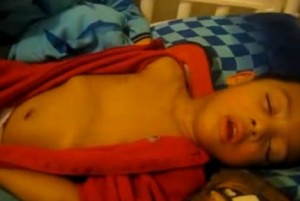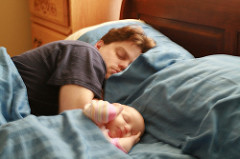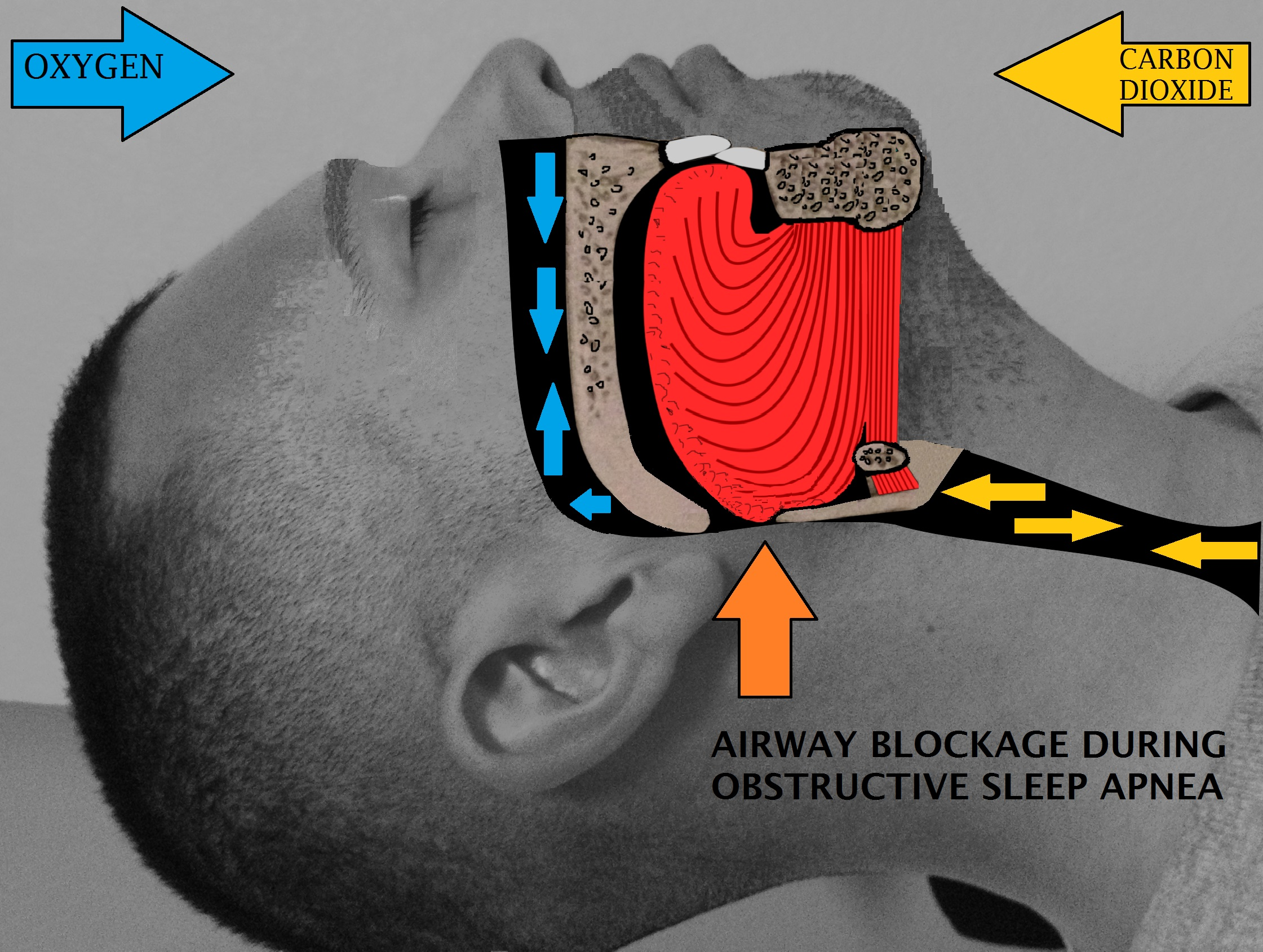Obstructive Sleep Apnea (OSA) is one of the most common sleep disorders. Breathing is impaired or completely stopped because of an obstruction in the upper airway. A single event lasts at least 10 seconds. A typical sufferer has hundreds of events a night.
Physical Signs of Pediatric Sleep Apnea
With children, OSA is usually caused by enlarged tonsils and adenoids. According to one study, hyperactivity and in attention showed significant improvement 2.5 years after adenotonsillectomy in children who have breathing disorders during sleep.
A narrow upper dental arch and mouth breathing are contributing factors.

(Photo: Sleep Group Solutions)
These children are often smaller, less developed and underweight because of a disruption in the nighttime production of growth hormone. They typically have a long face and dark eyes.

In a 5 year study published in 2013 in SLEEP journal, it was concluded that the odds of having behavioral problems were 6 times higher in children who had sleep apnea.
Parents reported problems in hyperactivity, disruptive behavior, communication, poor school grades.
Behavioral Signs of Pediatric Sleep Apnea
Common signs of pediatric sleep apnea include:
- Snoring
- Behavioral problems
- Problems staying asleep
- Poor school performance
- Teeth grinding
- Bedwetting
ADHD & Sleep Apnea
Because many symptoms of attention deficit hyperactivity disorder (ADHD) are similar to sleep disordered breathing, patients with ADHD symptomatology should be screened for sleep disordered breathing.
Early intervention with referral to an otolaryngologist and/or orthodontist can help reduce medications, improve sleep and promote overall health.
Pediatric Sleep Apnea Treatment
Surgical removal of the tonsils and adenoids (T&A) is generally considered the first line treatment for pediatric sleep disordered breathing if the symptoms are significant and the tonsils and adenoids are enlarged. If adenotonsillectomy is not indicated or if the surgery does not fully resolve the symptoms, positive airway pressure therapy like that commonly prescribed for adults probably will be helpful. The use of oral appliances can also be beneficial, as well as ensuring the child is supported by adequate exercise and nutrition.



